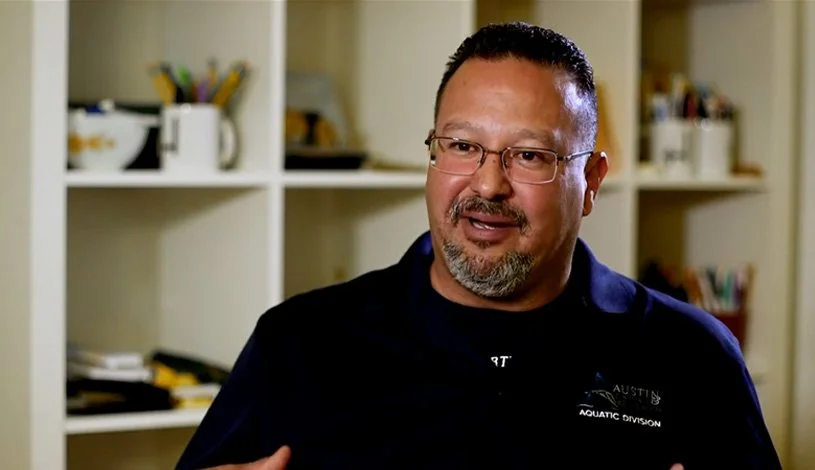Partnerships are at the heart of what creative placemaking projects are all about
Little Mekong Night Market, Asian Economic Development Association, St. Paul, MN. Photo by Annie O'Neill. Courtesy of LISC.
Arts and culture-based community development projects typically involve relationships between local organizations, artists or arts agencies, and local government partners. Although the specific arrangements of these stakeholders are as varied as the projects themselves, it’s always helpful to consider these partnership basics:
Think extensively about the types of partners you invite to the table, especially individuals from other sectors and organizations who can offer new perspectives.
Conceive of partnerships with their long-term potential in mind. Projects will end, but true relationships will last.
Make space for creating shared goals, values, and visions before writing grants or starting the main project. Reflect together at the outset about what your partnership can achieve.
Set up regular times to check in, evaluate partnership tasks and roles, and find ways to clarify and improve communications.
If the partners come from different professional sectors, designate an “intermediary” to translate across differences in professional language and methods.
Once you have found your partners, it will be necessary to define relationships, roles, and responsibilities.
USEFUL TIP
Lead with Curiosity
When you approach a potential partner, such as local government staff, a community development organization, or an arts collective, be curious! Understand the local landscape to identify the priorities and goals of your communities. It's also helpful to learn the language of potential partners/funders and how they communicate.
DOWNLOAD RESOURCES
WATCH THE VIDEO
Digging Deep: Community Engagement Methods & Techniques
-
One of the most essential partnerships in creative placemaking projects is with the artists or arts organizations that help to define a project. When starting these relationships, it’s important not to assume that the artist will only offer something visual or performative to the team.
Artists have many skills. They may influence the community engagement process, re-frame the problem at hand, or design a process to address it. Artists may find a creative way to discover what matters to a community, or they may help residents generate creative ideas to address a community challenge.
Put aside any assumptions you may have about a proposed question, and let the community reveal their ideas for solutions through deep communication, interaction, and engagement. Though artists may enter the partnership with their own ideas for the project, this connection with the community should be the main foundation for the project’s design and implementation. All partners should remain open to changes in plans or in the project itself. Remember that the process is just as important as the final product.
-
It’s never easy to balance many different voices within a single project. One of the more nuanced aspects of working with arts-based responses to community issues is balancing artistic freedom with community voices. Who should have the first word on what type of art is called for? Or the last word on what should be produced?
There is no simple answer to that question. In general, it’s best to cultivate a shared sense of creativity and control among all participants. Open, frequent communication is essential for maintaining this balance.
-
Just as artists and arts organizations bring different perspectives to community issues, local government staff and agencies also understand, and work with, community issues in ways that can be specific to the professional roles they play (such as with planners vs. elected officials). Understanding what these roles and perspectives are, and what they can contribute to any particular arts-based community project, is essential for being able to harness the full capacity of a project’s partnerships.
-
Though partners may agree early on about project goals, sometimes differences later emerge about how to achieve those goals. That’s why open, supportive communication is essential throughout the project. Make time to discuss issues as they arise and continue building on what is working.
Differences and misunderstandings can emerge from:
Differing perspectives and expertise
Jargon
Stereotypes
Lack of written agreements
Ambiguity around responsibilities
Unexpressed and unclear expectations
Role confusion
Cultural norms
Power dynamics
History
Lack of shared values
Be aware of what may be causing tensions and try to nip them in the bud.
-
Be sure to discuss the roles of each partner early on to give everyone a mutual understanding of what each partner sees as their responsibilities and how they fit into the project. All partners are bringing something to the table, and it is important to recognize and respect each player as a significant part of accomplishing your shared goals.
-
Getting to the point of sharing in the benefits of partnership will require patience, letting relationships evolve and move through their own necessary growing pains. Traditionally, healthy partnerships are thought to evolve through five main phases:
– Forming: In the early stages of a project, people are on their best behavior. This is a good time to set goals and expectations.
– Storming: There will naturally come a time when partners begin to push against each other’s boundaries, and this is when those boundaries become most visible. At this stage, it’s helpful to refer back to earlier discussions on goals, objectives, and roles.
– Norming: Now that the partners have moved through the difficulties of really learning about each other, this is a time to move the project forward with an appreciation of each participant’s different strengths.
– Performing: This is the time when the partnerships’ investment in each other pays off, and goals begin to be reached more fluidly and easily.
– Adjourning: If there is a clear endpoint to the project, it’s important to acknowledge what was achieved through the partnership and how everyone benefited.
Source: Bruce W. Tuckman




